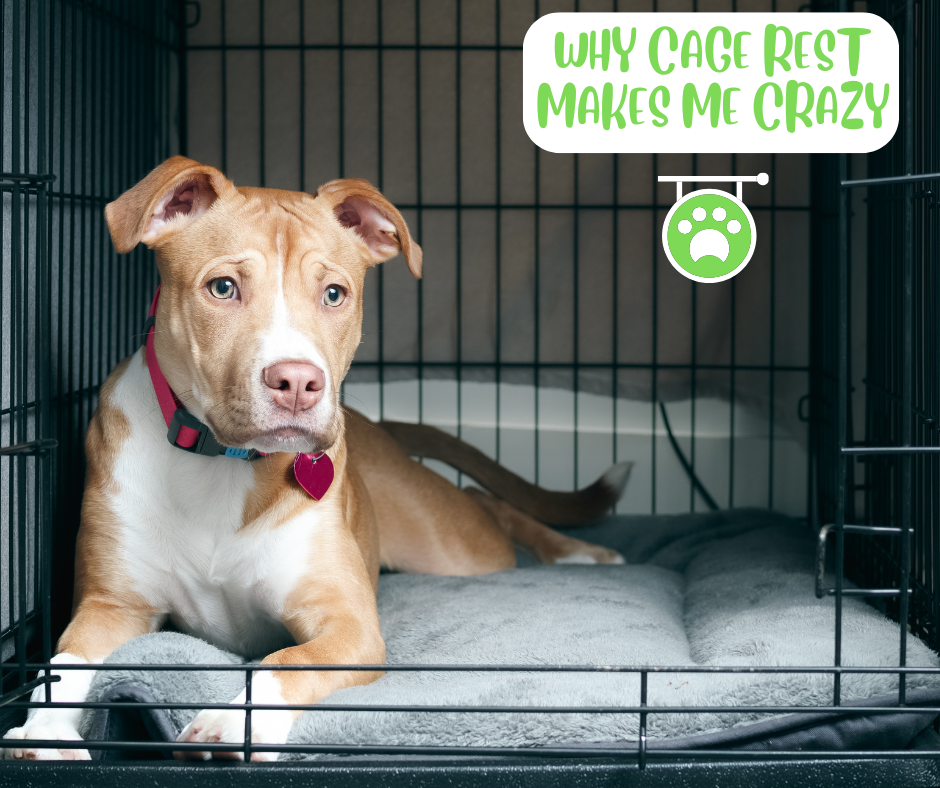Let’s picture this scenario: your dog hurt something…whether he’s limping or holding up a leg or not walking. The advice from the regular vet is no exercise. No movement. Sit in a cage for six weeks. And yes, I’m sure they prescribed something, allegedly for pain. Maybe a non-steroidal; maybe that medication I really hate which I wrote about in another post,
g3b3p3nt5n. But then they said no exercise. None. No movement.
.
Let’s look at it from a personal perspective and then let’s look at a little bit of science, neurology, that stuff that we scientists/veterinarians learned about in vet school, but maybe didn’t actually learn.
.
So I want you to do this test:
.
Don’t move.
Sit in that chair.
In exactly the same position.
.
No bathroom breaks.
No walks.
Nothing.
For six hours.
.
In just that tiny little bit of time it took you to read what I just wrote already you’re squirming. Your butt is talking to you. It’s telling you: this doesn’t work. I need to move.
So now imagine actually truthfully doing that for six hours at a time.
And meanwhile, part of your body has been injured. Maybe you strained a ligament, tore an ACL, hurt your back, any of these things.
.
Lack of movement is going to make things feel worse, simply based on this scenario that I gave you above.
OK now I’m gonna get a little bit more sciency. But don’t worry I’m not going to overdo it because even veterinarians would be challenged by the neurology. (These were very hard classes. We were expected to memorize anatomy of the spinal cord without any understanding of why the anatomy was important. It was not until I received 300 hours of advanced neurology in veterinary spinal manipulation training and 1000 hours in an advanced course that I actually started to understand all of this stuff. Human chiropractors understand it.)
.
Anything that makes a muscle move blocks pain. (In all of these scenarios, I am talking about soft tissue damage. I’m not talking about a fracture. A fracture needs to be set. And we can still apply all of this information to the rest of the body away from the fracture.)
.
So what does this mean?
Massaging a muscle blocks pain signals. Walking moves muscles and blocks pain.
Think about how you feel when you have sore muscles. Do you sit still? Or do you move? Do you do nothing or do you try to rub it?
Movement of muscles blocks pain!
So if your precious pooch potentially strained or tore an ACL, or hurt a disc in the back, I’m not advising going out and playing like a maniac and making it worse, but absolutely we need to get up and move. Walks. Straight line movement. Gentle play. Emphasis on gentle.
Then sure, use the (appropriate) anti-inflammatories, but make sure it truly is an anti-inflammatory and not just a medication to make your baby virtually in a coma therefore not moving and therefore not healing.

